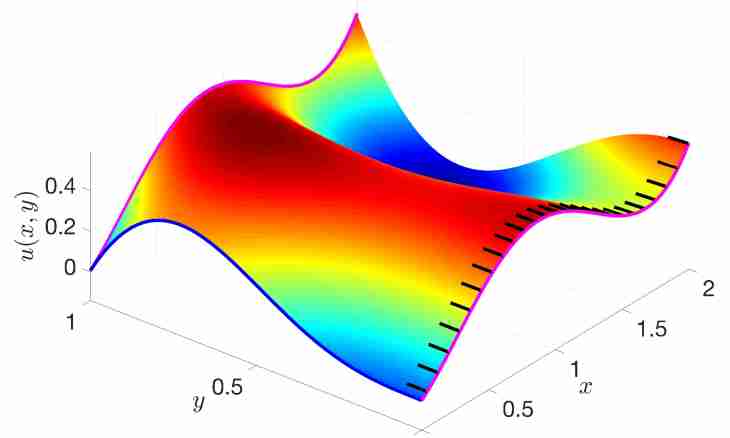Function is called continuous if in its display there are no jumps at small changes of an argument between these points. Graphically such function is represented by the continuous line, without admissions.
Instruction
1. The proof of continuity of function in a point is carried out by means of so-called ε-Δ-rassuzhdeniye. ε-Δ definition sounds so: let x_0 belong to a great number of X, then the f (x) function is continuous in x_0 point if for any ε> exists0 it Δ> 0 that from | x - x_0 |
Example 1: prove the continuity of the f (x) function = to x^2 in x_0 point. DokazatelstvoPo ε-Δ to definition exists it ε> 0 that | x^2 – x_0^2 |
Solve a quadratic equation (x – x_0) ^2 + 2*x_0 * (x – x_0) – ε = 0. Find a discriminant of D = √ (4*x_0^2 + 4 * ε) = 2 * √ (|x_0| ^2 + ε). Then the root is equal | x – x_0 | = (-2*x_0 + 2 * √ (|x_0| ^2 + ε))/2 = √ (|x_0| ^2 + ε). So, the f (x) function = is continuous x^2 at | x – x_0 | = √ (|x_0| ^2 + ε) = Δ.
Some elementary functions are continuous on all range of definition (set of values X): f(x) = C (constant); all trigonometrical functions - sin x, cos x, tg x, ctg x and so forth.
Example 2: prove the continuity of the f (x) function = to sin x. DokazatelstvoPo to determination of continuity of function on its infinitesimal increment write down: Δf = sin (x + Δx) - sin x.
Transform on a formula for trigonometrical functions: Δf = 2*cos ((x + Δx)/2) *sin(Δx/2). The cos function is limited at x ≤ 0, and the limit of the sin(Δx/2) function tends to zero, therefore, it is infinitesimal at Δx→0. Performing limited function also is infinite maloq sizes, so and increment of initial function Δf also is infinite small size. Therefore, the f (x) function = is continuous sin x for any value x.
2. Example 1: prove the continuity of the f (x) function = to x^2 in x_0 point. DokazatelstvoPo ε-Δ to definition exists it ε> 0 that | x^2 – x_0^2 |
Solve a quadratic equation (x – x_0) ^2 + 2*x_0 * (x – x_0) – ε = 0. Find a discriminant of D = √ (4*x_0^2 + 4 * ε) = 2 * √ (|x_0| ^2 + ε). Then the root is equal | x – x_0 | = (-2*x_0 + 2 * √ (|x_0| ^2 + ε))/2 = √ (|x_0| ^2 + ε). So, the f (x) function = is continuous x^2 at | x – x_0 | = √ (|x_0| ^2 + ε) = Δ.
Some elementary functions are continuous on all range of definition (set of values X): f(x) = C (constant); all trigonometrical functions - sin x, cos x, tg x, ctg x and so forth.
Example 2: prove the continuity of the f (x) function = to sin x. DokazatelstvoPo to determination of continuity of function on its infinitesimal increment write down: Δf = sin (x + Δx) - sin x.
Transform on a formula for trigonometrical functions: Δf = 2*cos ((x + Δx)/2) *sin(Δx/2). The cos function is limited at x ≤ 0, and the limit of the sin(Δx/2) function tends to zero, therefore, it is infinitesimal at Δx→0. Performing limited function also is infinite maloq sizes, so and increment of initial function Δf also is infinite small size. Therefore, the f (x) function = is continuous sin x for any value x.
3. Solve a quadratic equation (x – x_0) ^2 + 2*x_0 * (x – x_0) – ε = 0. Find a discriminant of D = √ (4*x_0^2 + 4 * ε) = 2 * √ (|x_0| ^2 + ε). Then the root is equal | x – x_0 | = (-2*x_0 + 2 * √ (|x_0| ^2 + ε))/2 = √ (|x_0| ^2 + ε). So, the f (x) function = is continuous x^2 at | x – x_0 | = √ (|x_0| ^2 + ε) = Δ.
4. Some elementary functions are continuous on all range of definition (set of values X): f(x) = C (constant); all trigonometrical functions - sin x, cos x, tg x, ctg x and so forth.
5. Example 2: prove the continuity of the f (x) function = to sin x. DokazatelstvoPo to determination of continuity of function on its infinitesimal increment write down: Δf = sin (x + Δx) - sin x.
6. Transform on a formula for trigonometrical functions: Δf = 2*cos ((x + Δx)/2) *sin(Δx/2). The cos function is limited at x ≤ 0, and the limit of the sin(Δx/2) function tends to zero, therefore, it is infinitesimal at Δx→0. Performing limited function also is infinite maloq sizes, so and increment of initial function Δf also is infinite small size. Therefore, the f (x) function = is continuous sin x for any value x.

